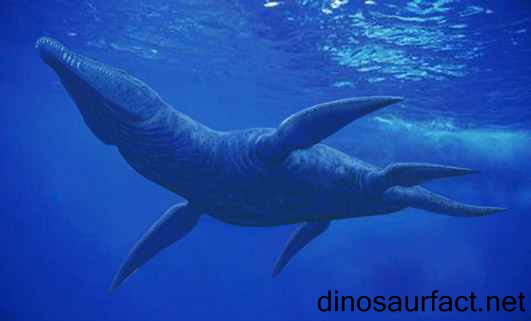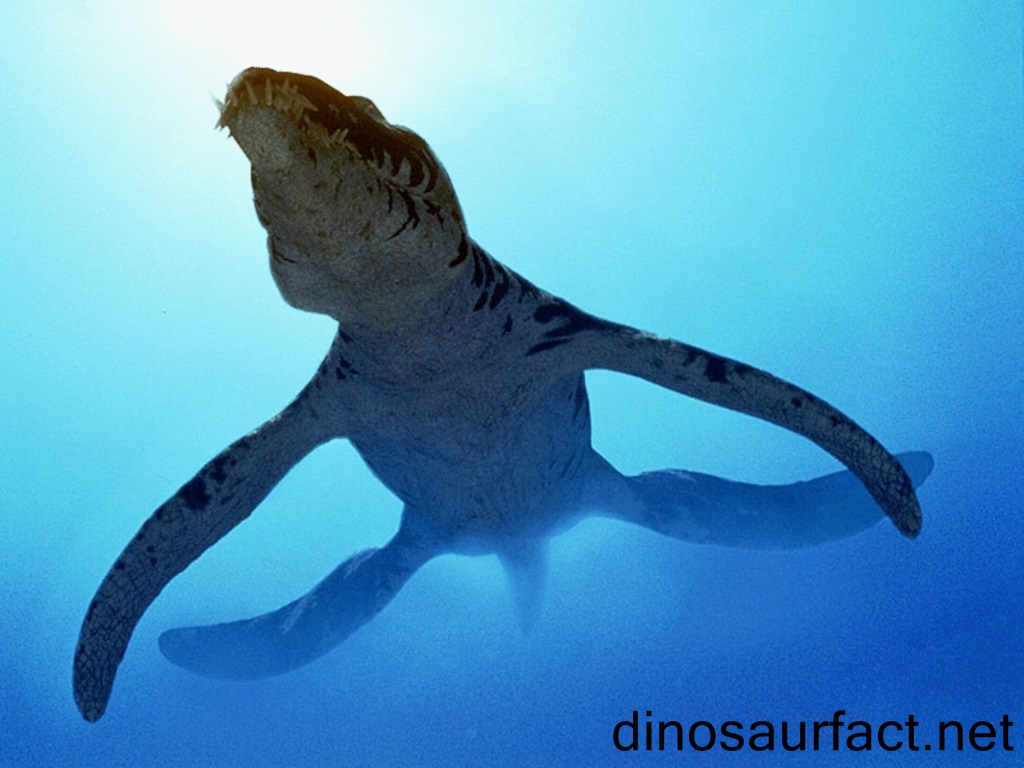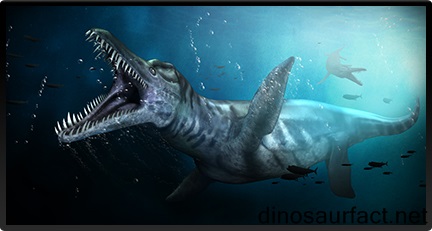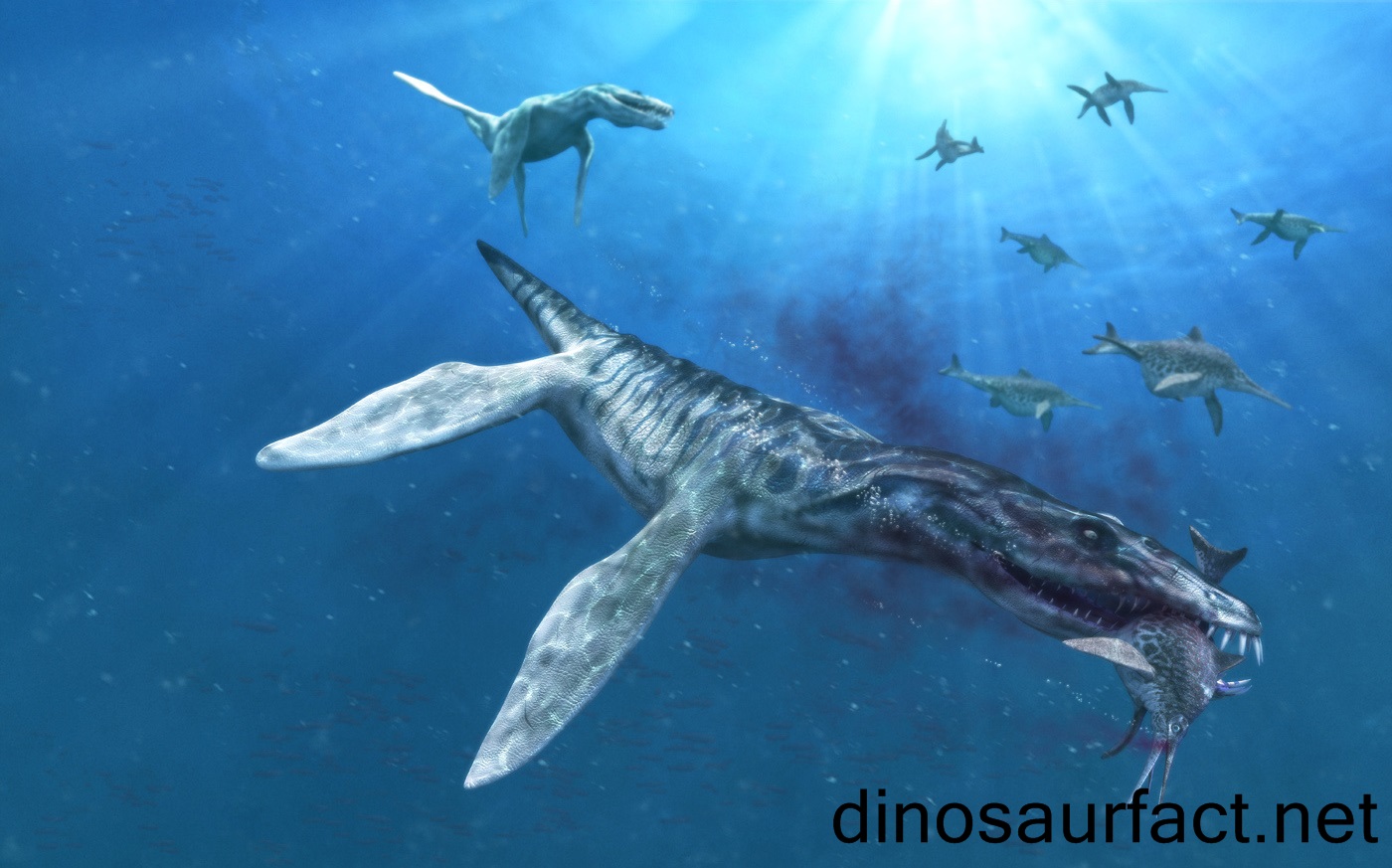 Click to visit the previous Marine Specie bio
Click to visit the previous Marine Specie bio
 |
|
 |
|
Kingdom: Animalia
Phylum: Chordata
Class: Reptilia
SuperOrder: Sauropterygia
Order: Plesiosauria
SubOrder: Pliosauroidea
Family: Pliosauridae
Genus: Liopleurodon
 |
|
 |
|
 |
|

The Liopleurodon is an extinct genus of marine reptiles. It existed in the upper Jurassic period. The timeline of its existence is judged at about 162 to 153 million years ago. This lies between the Oxfordian and Kimmeridgian ages of the Jurassic period.
The length and size of the Liopleurodon has been a matter of debate for many years. The BBC show 'Walking with Dinosaurs' had portrayed it as an 80 foot giant weighing more than 40 tons. But this show was telecasted in the late 1990s and at time, very little information was available about pliosaurids like the Liopleurodon. Recent research shows that its dimensions were one fourth those shown in the BBC show. Its mass is estimated to be much lesser than 40 tons.
The Liopleurodon was a carnivorous reptile. It is believed to have been an excellent hunter and a swift swimmer. It predatory skills are often compared with those of modern day sharks. It used its massive jaws and strong neck muscles to subdue its prey.
The Liopleurodon is considered one of the most successful aquatic predators of the Jurassic period.
Etymology
The meaning of the name Liopleurodon is three fold. The word 'leios' translates to 'supple' from Greek. 'Pleura' is also a Greek word and it is used to a particular 'side' of an object. 'Odont' is the Greek word for teeth. Thus the name Liopleurodon means 'smooth edged teeth'. Such a name was chosen for the creature as the holotype comprised of a single skull bone with prominent teeth.
The species name Liopleurodon ferox means 'ferocious' in Latin.
The christening of the remains was done by Henri Emile Sauvage.
Discovery of fossils
- The primary fossils of the Liopleurodon were found in the Boulogne sur Mer region of France in 1873. These were sent to Sauvage for examination and he named them the Liopleurodon ferox.
- Another skeleton was recovered from the town Charly of France and it was named the L. grossouvrei. This species is not recognized today.
- A few bones were also excavated from the Caen region of France. These were originally grouped under the genus Poikilopleuron, but Sauvage moves them to the genus Liopleurodon.
- Subsequently, many remains have been found in England and Germany which have been attributed to the Liopleurodon.
- A few bones discovered in South America are also believed to belong to the Liopleurodon.
- The fossils discovered in 1869 which were originally attributed to the Pliosaurus are today ascribed to the Liopleurodon.
Nature of fossils
The holotype of the Liopleurodon consisted of a single skull. This skull was in a very good condition and almost all the teeth on the jaws were intact.
Post cranial bones were discovered only with the paratypes found in France.
The English fossils were mostly incomplete.
Based on comparisons with the Kronosaurus, it was determined that the skull of the Liopleurodon was about one fifth the length of body.
Classification
- The Liopleurodon is classified under order Plesiosauria, sub order Pliosauriodea and family Pliosauridae.
- These taxa were not defined in the late 1800s when the Liopleurodon was first discovered. Sauvage did not comment on its exact location in the taxonomic tree when he described the fossils.
- The French fossils are today grouped under the subspecies L. ferox and the English fossils are grouped under the subspecies L. pachydeirus.
- The L. bucklandi and the L. grossouvrei are considered synonyms of the L. ferox.
Henri Emile Sauvage
Henri Sauvage was a French zoologist and paleontologist. His preferred field of study was ichthyology.
He frequently wrote articles for scientific journals and magazines.
Sauvage was one of the first scientists to explore the country of Portugal for dinosaur remains. His interest in fish fossils eventually diverged to prehistoric vertebrates as well.
Morphological features
- The size of the Liopleurodon has been a matter of much debate and speculation. When the fossils of the Liopleurodon were discovered, ichthyosaurs and pliosaurs were not very well defined. Also, the species that were discovered were only minimally understood.
- The bones of the Liopleurodon were inspected by scientist L. B. Tarlo in the early twentieth century and he had highly exaggerated its dimensions. He presumed the skull to be one seventh to one eight the size of its body. This would mean that the Liopleurodon should have been 80 to 85 feet in length.
Tarlo also estimated its weight to be 140,000 kilos. Such a size was enormous even as compared to the gigantic sauropod dinosaurs.
- The 1999 BBC documentary also reinforced this misconception about the size of the Liopleurodon.
- But when better fossils of other pliosaurids were uncovered, it was observed that pliosaurid skulls were only about on fourth to one fifth their body size. This finding put into perspective the length of the Liopleurodon.
- The recent consensus on the Liopleurodon is that it could attain a length of 25 feet, with the average length being 20 meters.
- Its weight is still unknown, but most scientists believe it could have ranged between 12000 to 20000 kilos.
- Like other pliosaurids, the Liopleurodon had a large head and a short neck.
- Both its fore and hind limbs were modified to form flippers. Its hind legs were slightly longer than its fore legs, indicating that it used its hind legs for propulsion.
- The Liopleurodon was a strong swimmer.
Habits and habitat
The Liopleurodon was a carnivore. Its dentition makes an herbivorous lifestyle highly unlikely. It most likely preyed on large marine reptile like ichthyosaurs and other plesiosaurids.
The location of its nostrils and eyes indicates that it had a keen sense of smell. It possibly could sense it prey without having eyes on it and hunted accordingly.
The fossils of the Liopleurodon were discovered all over Europe. This indicates that it could have been very commonly found in the Jurassic Atlantic Ocean. It lived in deeper waters.
The reproductive system of the Liopleurodon is not yet defined.
Related and coexisting species
The Liopleurodon was closely related to the Pliosaurus, Simolestes and the Megacephalosaurus.
It most probably coexisted with the Simolestes, Opthalmosarus and even the Arthropterygius. Crocodiles, turtles, bivalves, gastropods, etc, formed an integral part of the environment of the Liopleurodon.
Conclusion
The Liopleurodon was in the top tier of the Jurassic aquatic food chain. Even after disregarding the overstated dimensions, it was still one of the largest creatures to ever inhabit the earth.
If better preserved post cranial skeletons are discovered, the debate about its size may be put to rest.
Index
Extinct Profiles
 Triassic Dinosaurs
Triassic Dinosaurs Jurassic Dinosaurs
Jurassic Dinosaurs Cretaceous Dinosaurs
Cretaceous Dinosaurs Pterosaurs
Pterosaurs Marine Reptiles
Marine Reptiles Dinosaur Extinction
Dinosaur Extinction